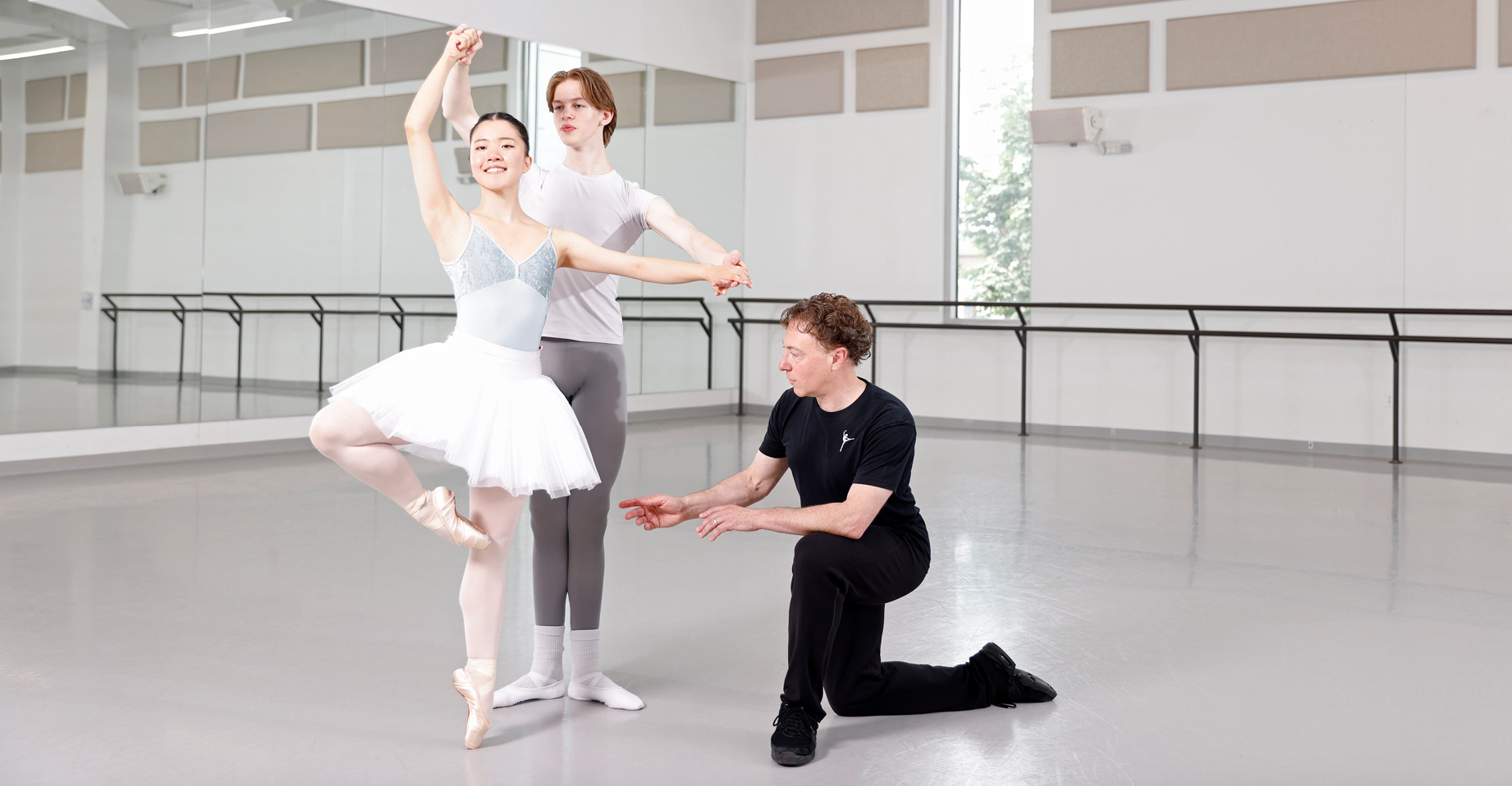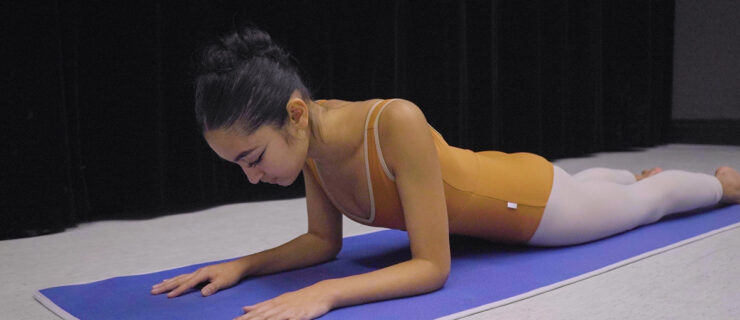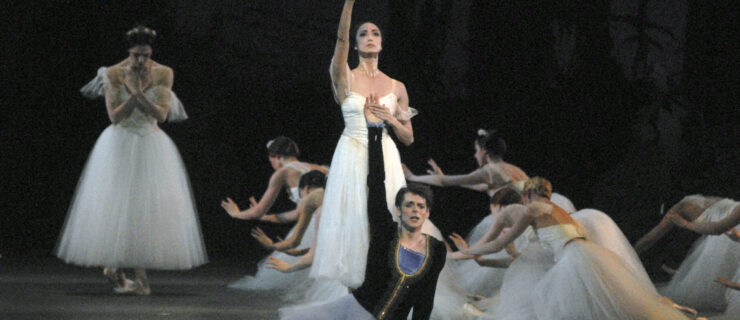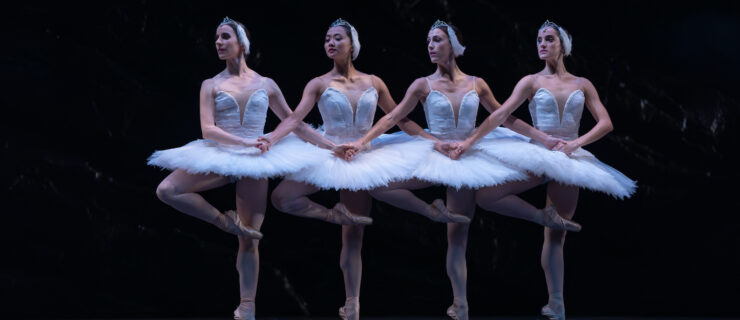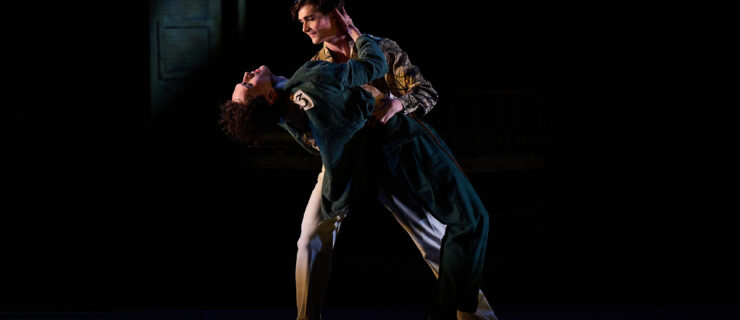Mastering Finger Turns With Christopher Budzynski
Pittsburgh Ballet Theatre School faculty member Christopher Budzynski remembers the first time he saw dancers perform finger turns in Nutcracker as a child. “They did a lot, and it blew my mind that this was possible, and that they were doing it so easily.”
Budzynski would go on to do many partnered pirouettes throughout his schooling and career with both Boston Ballet and as a principal with PBT. “Two people dancing together, it’s just a really magical part of the art form,” he says. Still, finger turns can quickly fall apart if not done correctly, and they require utmost cooperation between partners. When teaching the step, Budzynski focuses first on breaking down the mechanics. “Then we work on how to make those mechanics disappear so that it looks seamless.” He offers his tips for finger turns below.
Turning Fundamentals
Budzynski recommends a simple barre exercise to set the turning partner up for success. “If technique fundamentals are not in place, you’re not going to be able to maintain the turn.”
Stand in fifth with one hand at the barre. Staying on flat with the arm en haut, retiré the leg, développé devant until it’s almost fully stretched and then rond de jambe à la seconde, finishing in retiré. (While it’s not wrong to fully stretch the leg in développé, Budzynski thinks starting the rond de jambe when it’s just shy of completion makes it easier to engage the supporting leg’s turnout in opposition.) Keep the leg a little under 90 degrees, making sure the hips stay level. “If the leg is too high, the hips can come out of alignment,” he says. Repeat two or three times.
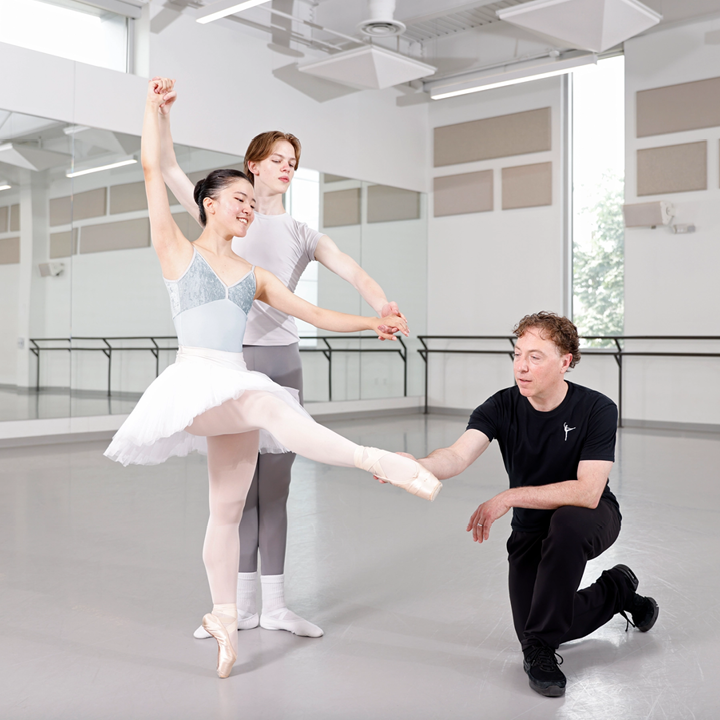
Then, rise to fifth sous-sus and repeat the exercise on pointe. Focus on maintaining turnout in your standing leg. “As soon as you lose rotation in the standing leg, then you lose what direction is front for your body,” Budzynski says. Additionally, make sure your supporting knee is fully stretched and that you’re aligned over your pointe shoe.
Spacing and Stance
When coming together for finger turns, both dancers need to stand far enough apart to avoid hitting each other, while close enough to allow the turner’s upper arm to stay over her head. “I also find that if the supporting partner is a little bit to the left and not straight behind, it facilitates access to the hand so that you’re not pulling the turner’s arm too far back in the pirouette,” says Budzynski.

Arm Placement and Hand Grip
The raised arm’s position is crucial. “For people just learning finger turns, that arm is probably where things can go wrong the easiest,” says Budzynski. The supporting partner should aim to keep the turner’s lifted arm centered and slightly in front of her head. The turner, meanwhile, needs to keep the elbow open while rotating to maintain that centered arm placement.
As for the grip, Budzynski personally recommends offering the middle finger. “That way you have a bit of support on both sides of that finger,” he says. The turner’s grip should be fairly loose. “If it’s too relaxed, the finger can slip out,” he says. But too much tension can create a tug-of-war or even hurt the supporting partner’s hand. To avoid pulling the arm side to side, Budzynski advises each dancer to very slightly push up or down into their partner’s hand to create stability.
Don’t Stir the Pot
As the turner whips into pirouette, the supporting partner can make slight, small circles over the turner’s head. “They should be almost imperceptible,” says Budzynski. “If they’re too big, or the turner starts trying to pull around with the circles, that’s when we lose our center. And, of course, the more somebody pulls, the more the other pulls back, and it continues escalating until it’s not possible to go on.”
For the turning dancer, spotting helps sustain momentum. “Your spot is not only your head—your body spots as well,” says Budzynski. “So make sure that your entire body, from top to bottom, is spotting in the same direction.”
Tip: If You’re Both Similar Height
Sometimes partners may be too close in height, which can create problems. “The hand has to be over the turner’s head—if it’s pulled behind, the turn becomes impossible,” says Budzynski. To help keep it centered, the turner can shorten their arm by bending at the elbow.
Working Together
When practicing finger turns or any kind of partnering, dancers must cooperate, communicate, and respect each other. “You can let your partner know what you need without being insulting or overly judgmental,” Budzynski says. “Things will go wrong, but you’ll learn together and build trust with each other.”

After getting the basics down, you can start adding multiple turns and really start having fun with the step. “Once you really have the technique and the feeling of it, it’s musicality and movement,” says Budzynski. “The mechanics can really disappear and it’s no longer an effort.”
